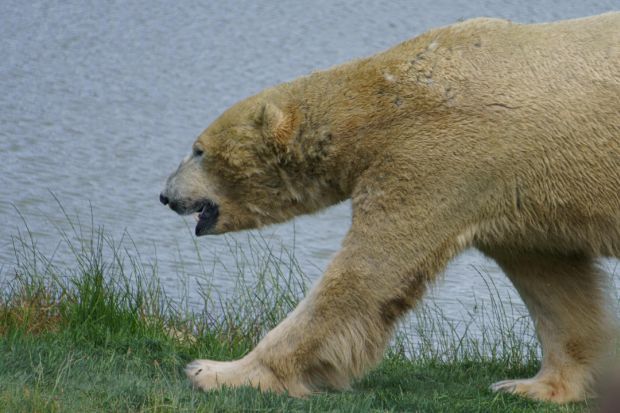A QUINTESSENTIAL image representing the Arctic is a polar bear majestically traversing the endless ice.
Fluffy yet deadly, these massive carnivores are the top dogs in their natural habitat, having no natural predators and said to be even higher up on the food chain than humans.
Unfortunately, even the mighty polar bear is not immune to climate change; in fact, it is one of the animals most vulnerable to global warming.
It is said that a concerning development is taking place as polar bears attempt to adapt to climate change.
Is it true that these bears have taken to eating grass and other terrestrial matter in place of their usual diet of aquatic animals?
Verdict:
TRUE
Polar bears are obligate carnivores who rely on the Arctic’s sea ice to reach their primary prey, the ringed seals that use offshore ice floes as resting places. However, as climate change accelerates the melting of glaciers and sea ice, these bears have been forced to adapt to a rapidly changing environment.
In particular, recent reports of polar bears consuming grass have sparked renewed concerns about the effects of a warming world on their natural habitat and food sources. Scientists recording these observations warn that polar bears are at risk of starvation due to the melting Arctic sea ice as they struggle to adapt their diets for life on land.
The loss of ice not only reduces polar bears’ hunting grounds but also extends the duration of ice-free periods, leaving them with fewer opportunities to catch seals. As the ice diminishes in a warming climate, many polar bears are forced to spend more time on land, consuming bird eggs, berries, and even terrestrial vegetation such as grass.
While polar bears have always been opportunistic feeders, this increased reliance on land-based food is a relatively recent phenomenon driven by environmental changes. This dietary shift is largely a survival strategy, meant to help them endure periods without access to their traditional prey. However, grass and other terrestrial foods do not provide the high-fat content that seals do, which is essential for polar bears to maintain their energy levels and build the fat reserves needed for survival during lean times. Consequently, while eating grass may help sustain them in the short term, it is insufficient to meet their long-term dietary needs, causing the bears to rapidly lose weight and raising their risk of death.
This adaptation also raises questions about the broader ecological impacts of climate change, as the movement of an apex predator like the polar bear into ecosystems where they are not naturally found – in this case, terrestrial ecosystems – could alter the balance of these environments.
The sad reality of this is that we may not have polar bears to observe for much longer, so it is high time we do something about it.
References:
https://www.bbc.com/news/
https://oceana.org/marine-



